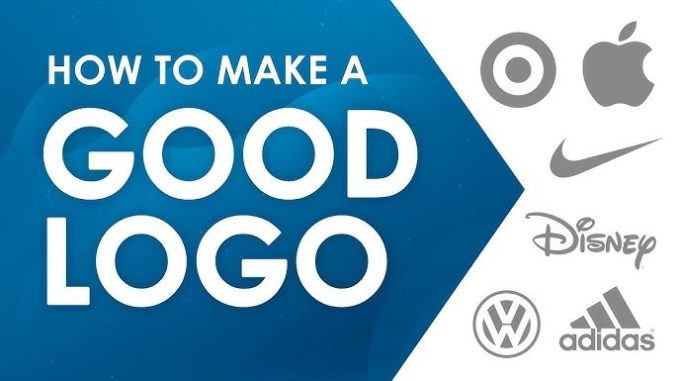
In the vast and ever-evolving landscape of commerce, a business logo stands as much more than a mere graphic embellishment; it is often the very first handshake between a brand and its audience. It’s a silent ambassador, a visual shortcut to a company’s identity, values, and offerings. While countless hours and resources can be poured into product development and marketing strategies, a poorly conceived or executed logo can inadvertently undermine these efforts, leading to confusion, disinterest, or even misrepresentation. Conversely, a truly great business logo possesses an almost alchemical power, instantly conveying trust, professionalism, and distinctiveness. But what precisely are the ingredients that blend together to create such an iconic and effective visual emblem?
At its core, a great logo must be **simple and memorable**. In a world saturated with visual information, clutter is the enemy of recognition. Complex designs, intricate details, or an excessive use of colors can overwhelm the viewer, making the logo difficult to recall or reproduce across various mediums. Think of the world’s most recognizable logos: Nike’s swoosh, Apple’s bitten apple, McDonald’s golden arches. Each is remarkably simple, yet instantly identifiable. This simplicity allows for immediate comprehension and effortless retention, enabling the logo to etch itself into the collective consciousness of consumers. It’s about distilling the essence of a brand into its purest visual form, ensuring that it can be grasped in a fleeting glance.
### Versatility and Adaptability Across Mediums
Beyond simplicity, a truly effective logo must possess an innate **versatility**. In today’s multi-platform environment, a logo needs to function flawlessly across an astonishing array of applications. It must look equally compelling on a grand billboard as it does on a tiny social media avatar. Consider how your logo will appear in black and white, in various sizes, on different colored backgrounds, and across both print and digital formats. A logo that loses its impact or legibility when scaled down to a favicon, or when printed on a promotional pen, is inherently flawed.
This adaptability often hinges on a design that avoids overly intricate details and embraces clean lines and clear shapes. A great logo maintains its integrity whether embossed on leather, stitched onto fabric, displayed on a high-resolution screen, or reproduced in a single color. It’s about designing for longevity and ubiquitous presence, ensuring the brand’s visual identity remains consistent and impactful regardless of the medium or context.
—
### Timelessness Over Transient Trends
The allure of following current design trends can be strong, but a truly great logo prioritizes **timelessness** over fleeting fads. While incorporating contemporary elements can feel fresh initially, designs heavily rooted in transient styles risk looking dated and irrelevant within a few years. Think of logos from the 80s and 90s that were adorned with gradients, bevels, or excessive shadowing; many now appear comical or out of touch.
A timeless logo, on the other hand, transcends passing fashions. It relies on fundamental design principles that remain aesthetically pleasing and effective across decades. This doesn’t mean a logo should be devoid of personality or innovation, but rather that its core structure and concept should possess an enduring quality. Investing in a timeless design means less frequent and costly rebrands, allowing a consistent visual identity to build equity over many years. It’s about building a legacy, not chasing the latest buzz.
—
### Appropriateness and Relevance to the Brand
A great logo always maintains **appropriateness and relevance** to the business it represents. The visual language of the logo—its colors, typography, imagery, and overall style—should align perfectly with the industry, target audience, and brand personality. A financial institution, for example, would likely opt for a logo that evokes trust, stability, and professionalism, perhaps utilizing cool tones and classic fonts. Conversely, a children’s toy company would naturally gravitate towards bright colors, playful fonts, and whimsical imagery to appeal to its young demographic.
The logo should communicate something essential about what the business does or stands for, even if subtly. The Amazon logo, with its arrow pointing from A to Z, cleverly suggests that they sell everything. FedEx’s hidden arrow within its wordmark subtly implies speed and precision. These examples showcase how thoughtful design can embed deeper meaning and reinforce a brand’s core offering without being overly literal or simplistic. It’s about creating a visual story that resonates with the brand’s narrative.
### Distinctiveness and Impactful Storytelling
Finally, a truly great business logo must be **distinctive** and capable of telling a silent story. In a marketplace teeming with competitors, standing out is paramount. A generic or uninspired logo will simply blend into the background, failing to capture attention or differentiate the brand. Distinctiveness comes from original thought, clever execution, and a willingness to break away from clichés prevalent in a given industry.
Beyond mere visual differentiation, the most powerful logos often possess a nuanced narrative or evoke a specific emotion. Consider the Starbucks logo, which evokes a sense of artisanal quality and a mythical allure through its siren figure. Or the instantly recognizable golden arches of McDonald’s, which have become synonymous with global consistency and comfort food. These logos don’t just identify; they evoke feelings, memories, and associations that contribute to a brand’s unique story. They become shorthand for the entire brand experience, embodying its values, aspirations, and promise to the customer.
In conclusion, creating a great business logo is an intricate process that demands more than just aesthetic appeal. It requires strategic thinking, an understanding of design principles, and a deep appreciation for the brand it represents. By focusing on simplicity, versatility, timelessness, appropriateness, and distinctiveness, businesses can forge a visual identity that not only captures attention but also builds lasting recognition, fosters trust, and silently communicates their unique value proposition to the world. A well-crafted logo is an investment, not an expense, serving as a cornerstone for brand equity and a powerful catalyst for enduring success.